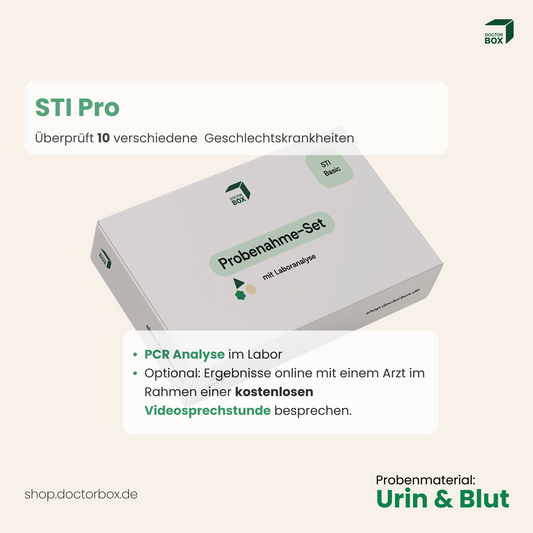hemophilia
Miriam WeihermüllerIn hemophilia, also known as bleeding disorder, blood clotting is disturbed.
The blood fulfills fundamentally important tasks in the human body, because it supplies every single cell with vital nutrients and oxygen. In this way, the blood creates the basic requirement for the body cells to be able to provide energy and for the organism to function properly.
Human blood consists of what is known as blood plasma and cellular components, namely red blood cells (erythrocytes), white blood cells (leukocytes) and blood platelets (thrombocytes). The blood plasma contains proteins, salts and other small components such as sugar.
Blood flows through the veins throughout the body, reaching all muscles, tissues, organs and joints. On average, a person has about 70-80 ml of blood per kilogram of body weight.
How does blood coagulate?
The blood fulfills a central function when it comes to closing wounds after an injury: it coagulates! A blood clot is formed that is able to quickly "clog" the bleeding site again. In this way, no more blood can escape from the body and the wound can heal completely.
The blood platelets (thrombocytes) and various proteins, so-called coagulation factors, are involved in the process of blood clotting in the body. They are numbered in medicine with Roman numerals from I to XIII and are always found in human blood in an inactive form.
In a healthy person, blood clotting takes place as follows:
- The blood vessel contracts at the injured part of the body: This reduces the blood flow there.
- The platelets accumulate and cover the injury site with a so-called platelet plug.
- The coagulation factors then start a chain reaction, which is referred to in medical jargon as the “coagulation cascade”. All factors are now activated one after the other, similar to a domino game in which one stone knocks over the next. The first clotting factor is activated by the wound itself, which then activates the second, and so on.
This clotting process causes the blood to clot at the site of the injury, stopping the bleeding. A stable and strong fibrin fiber network is created, a kind of endogenous glue. Together with the platelet plug, these fibrin fibers ensure wound closure.
Blood clotting in hemophilia patients
People with hemophilia, also known colloquially as hemophiliacs, now lack certain coagulation factors, i.e. proteins that are required for the blood coagulation process described above.
Specifically, coagulation factors VIII or IX are not present in sufficient quantities in hemophilia patients. In a healthy person, these factors lead to the formation of the fibrin fiber network and the wound is thus closed in a stable manner. This cannot happen in the case of haemophilia and the coagulation cascade is thus interrupted: the blood does not coagulate sufficiently. Injury sites that were thought to be closed can therefore start bleeding again one to two hours later.
The medical term for such a coagulation disorder is "coagulopathy".
Incidentally, haemophilia does not cause the affected person to bleed more quickly. Rather, it just takes longer for the blood to clot completely and for the wound to be tightly closed. Those affected bleed longer, not faster.
In the ICD-10, the international index of diseases, hemophilia can be found in the chapter “Coagulopathies, purpura and other hemorrhagic diatheses” under the numbers D66-D68.
The different forms of hemophilia
As already mentioned, there are different clotting factors in the blood. Depending on which coagulation factor is affected in the case of a hemophilia, physicians differentiate between different forms of the disease. The most important forms of hemophilia are hemophilia A and hemophilia B:
- Hemophilia A
Here the coagulation factor VIII is affected (factor VIII deficiency): either this coagulation factor is not sufficiently formed by the body or it is defective. About 85% of all hemophilia patients suffer from this form of the bleeding disorder. In most cases, those affected are male.
- Hemophilia B:
In this form of hemophilia, coagulation factor IX is missing (factor IX deficiency). Men in particular also suffer from this form of hemophilia.
Both blood coagulation factors are essential components for blood coagulation and thus for wound closure.
In addition to these two main forms of hemophilia, there are other inherited blood clotting disorders. This also includes the so-called “Von Willebrand-Jürgens Syndrome”, VWS for short.
A certain protein, the so-called "Von Willebrand factor" is missing in this form or is not present in sufficient quantities. As a result, the body cannot close an injury site as quickly as normal.
About 1% of the total population is affected. However, the tendency to bleed varies in severity among those affected. The most severe form of the disease occurs only extremely rarely.
Unlike the two main forms of hemophilia, this bleeding disorder affects both sexes equally. However, most of the affected people have hardly any symptoms, which means that VWS remains undetected for a long time.
Symptoms: What are the different forms of hemophilia?
The extent to which a hemophilia becomes noticeable depends primarily on the severity of the coagulation defect.
A distinction is made between light, medium and heavy forms. A normal coagulation factor activity is given as 100%. However, even in people with normal coagulation, this value can vary slightly.
- In the case of a mild form of haemophilia, the affected patients can still form a certain amount of coagulation factor, namely approx. 5-50% of the valid norm.
Those affected are hardly noticeable in everyday life. Increased bleeding can only occur in the case of major injuries or surgical interventions.
- In a moderately severe form of hemophilia, those affected can only produce around 1-5% of the normal amount of clotting factors.
- In the severe form of hemophilia, the clotting factor is either missing completely or barely functioning. Bleeding can also occur quickly as a result of minor injuries. In some cases, it is not at all clear why bleeding has occurred. Doctors speak of spontaneous bleeding. Thanks to today's long-term prophylaxis, the moderate as well as the severe form of hemophilia runs like a mild bleeding disorder.
Although two different coagulation factors are affected in hemophilia A and hemophilia B, the symptoms are the same. This is how it typically happens:
- Increased occurrence of hematomas, especially on the arms and legs. However, bruises can also appear on the hull.
- Bleeding in joints: This is often associated with severe pain for those affected. In most cases, the elbow, knee and ankle joints are affected.
- bleeding into the fatty tissue
- bleeding into the muscles
- In some cases there is blood in the urine.
- When changing teeth, heavy postoperative bleeding may occur.
- If there is bleeding from internal body organs or even in the head, there is a risk of death.
- Typically, bleeding stops in those affected initially, but bleeding can start again after a few hours or even days.
Typical symptoms of von Willebrand-Jürgens syndrome:
- bleeding gums
- nosebleeds
- Prolonged bleeding after operations such as tooth extraction.
- Women can experience excessively long or heavy menstrual periods.
Course: what happens in hemophilia?
Haemophilia does not get worse with age. Parents generally notice the disease in their offspring within the first year of life. The child becomes more and more active and bleeding injuries occur more often, which reveal a blood clotting disorder.Hemophilia is not curable. With early diagnosis and adequate therapy, however, those affected can lead a fairly normal life. Life expectancy is also unaffected by the disease.
If there is damage to the joints as a result of bleeding, physiotherapy can be very helpful. In this way, restrictions on movement can be avoided.
Causes and Risk Factors: The Genetics Behind Haemophilia
Hemophilia is an inherited, i.e. congenital disease of the blood clotting system. A spontaneous gene change, a so-called spontaneous mutation, only occurs very rarely.
The disorder is based on a clotting factor deficiency, which is almost always caused by a defective gene. Almost exclusively boys/men are affected by hemophilia. To understand why this is so, a little look at genetics is needed.
Inheritance of the blood clotting disorder
The blueprints (genes) for the entire organism and the internal processes are stored in the chromosomes. These are found in the nucleus of every cell in the human body.
Every body cell has 46 chromosomes. When a baby is conceived, it gets around half of its chromosomes from its father and half from its mother. 44 of the chromosomes come in pairs: they are called autosomes in medicine. The two remaining chromosomes are the sex chromosomes, which determine whether the baby will be a boy or a girl. Boys have an X and a Y chromosome (XY), girls have two X chromosomes (XX).
The hemophilia is now passed on X-chromosomally, which means that the genetic information for the formation of the coagulation factors is on the X chromosome.If a girl or woman has a defective X chromosome, i.e. one with a mutation, her body can still produce coagulation factors because the second healthy X chromosome compensates for it. As a result, they are largely symptom-free for the rest of their lives.
However, the woman can pass the genetic defect on to her offspring: she becomes a carrier, a so-called conductor.
- If a woman has one defective X chromosome and one healthy X chromosome, she passes one of them on to her baby. The probability that the mutated specimen will be inherited is 50%.
- If the woman in question now has a daughter, she is generally not affected by hemophilia because she still carries a second X chromosome, which may be intact and contains the blueprint for the clotting factors. As a rule, however, the daughter in turn becomes a potential carrier.
- However, if the woman now has a son to whom she inherits the mutated X chromosome, the boy's body no longer has a chance of forming the necessary coagulation factors, because boys only have a single X chromosome. In such a case, hemophilia develops.
Von Willebrand-Jürgens Syndrome is not always genetically inherited, but can be acquired in some people during their lifetime, for example as a result of autoimmune diseases.
Therapy: What are the options for hemophilia?
Since the affected persons have an increased tendency to bleed, they have to protect themselves as best they can from injuries and thus from bleeding wounds in everyday life. There are also some drugs that reduce blood clotting, such as acetylsalicylic acid. Haemophilia patients must absolutely avoid such drugs!
Drug treatment of hemophilia
In mild forms of hemophilia, the active ingredient desmopressin can be used, which releases coagulation factors stored in the human body. However, this medicinal substance can only be used for a short time.
In severe cases of the hemophilia, the affected patients are regularly injected with the missing coagulation factors into the vein. The exact course of treatment for hemophilia varies from person to person. On the one hand, the degree of severity of the disease and, on the other hand, the age of the person affected are of decisive importance.
In the case of so-called long-term therapy, patients with hemophilia A are injected with the missing coagulation factor VIII about 2-3 times a week. People with hemophilia B need coagulation factor IX: This does not spread in the blood as quickly as coagulation factor VIII. For this reason, an injection is usually only required once or at most twice.
After appropriate instruction, the patients can also inject the coagulation factor themselves at home.
The injected coagulation factors are either produced by genetic engineering or taken from donor blood. In the past, in some cases, patients who received coagulation factors from donated blood became infected with infectious diseases such as HIV. Thanks to today's modern quality standards, coagulation factors from donated blood are, with the greatest certainty, completely virus-free.
On Demand Therapy
This is an on-demand treatment. The coagulation factors are only injected when needed at a specific point in time, for example before an upcoming surgical procedure or in the event of acute bleeding.
You can do this even if you have hemophilia
In the past, the hemophilia was still associated with severe limitations. Thanks to modern therapy methods with coagulation factors that are available today, the situation is very different.
Sports with a lot of physical contact, skiing, mountain biking or trades are also possible for the sick patients. However, the severity of the bleeding tendency and the individual adjustment of the therapy play a central role.
People with hemophilia also want to lead a normal, everyday life and be active in their leisure time just like healthy people. Physical movement and activity is not only fun, but also creates a mental balance, strengthens the muscles, promotes mobility and trains the sense of balance. For this reason, regular exercise can also protect against injuries with bleeding. If you are unsure which physical activities are best for you, you should definitely consult your doctor.
Despite adequate treatment, living with hemophilia requires practice and mindfulness in everyday life. For example, it takes a little time before those affected can administer the medication themselves.
Children with hemophilia should learn at an early age how to deal with their condition properly and how to know exactly what needs to be done in an emergency.
Parents are faced with the challenge of protecting their children from bleeding injuries. On the other hand, mothers and fathers should not pack their offspring in cotton wool. A balance is needed so that the affected children can grow up as freely and unencumbered as possible, but still know how to conscientiously deal with their own illness.
People with haemophilia must have all vaccinations subcutaneously, i.e. injected under the skin. Vaccines are usually injected intramuscularly (into the muscle). In addition, people with bleeding disorders should be vaccinated against hepatitis A and B.In addition, the sick should always carry an emergency ID card with them. This includes information such as the exact medical diagnosis and the severity of the hemophilia.
Sources
https://www.dhg.de/bleeding-diseases/haemophilia.htmlhttps://www.msdmanuals.com/en-us/home/blood-diseases/bleeds-due-to-blood-clotting-disorders%C3%B6rung/h%C3%A4mophilie
https://deximed.de/home/clinical-topics/blood/patienteninformation/bleeding-diseases-clotting-disorders/haemophilia
https://www.amboss.com/de/wissen/H%C3%A4mophilie/
https://flexikon.doccheck.com/de/H%C3%A4mophilie
© Seventyfour / Adobe Stock




